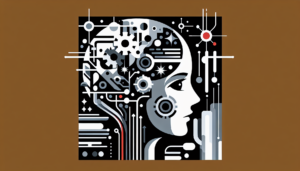Let me tell you about eight powerful ways that local businesses can tap into the true potential of AI Assistant Chatbots to optimize their sales process and take their customer service to the next level. From round-the-clock customer support to personalized product recommendations, these cutting-edge technologies have a proven track record of driving sales, enhancing customer satisfaction, and reducing operational costs. Say goodbye to tedious manual processes and say hello to a streamlined, cost-efficient, and highly effective approach.
Now, get ready to learn how AI Assistant Chatbots can transform your local business, maximize your sales potential, and provide a seamless customer experience. Let’s dive right into these game-changing strategies that are reshaping the landscape of modern business.
1. 24/7 Customer Support
Handling customer inquiries manually 24/7 would require hiring additional staff, leading to increased labour costs and potential delays during off-hours, resulting in customer frustration and lost sales opportunities.
Implementing an AI chatbot on the website enables automated customer support round the clock. Customers can receive immediate assistance, improving the customer experience and increasing the chances of converting sales.
A local e-commerce store specializing in handmade jewelry integrates an AI chatbot on its website. The chatbot efficiently handles customer inquiries, order status updates, and returns, providing 24/7 support and enhancing customer satisfaction.
2. Lead Generation and Qualification
Manually engaging with potential leads on social media platforms can be time-consuming and labour-intensive. It may lead to missed or delayed follow-up, resulting in a lower conversion rate and lost revenue opportunities.
AI chatbots engage with users, ask qualifying questions, and prioritize high-potential leads for personalized follow-up, enabling sales teams to focus their efforts on the most promising prospects.
A local fitness studio incorporates an AI chatbot on its social media platforms. The chatbot engages with interested users, qualifies leads based on fitness goals and preferences, and facilitates personalized follow-up, optimizing lead generation and conversion rates.
3. Personalized Product Recommendations
Providing personalized recommendations manually would require extensive human effort to analyze individual customer data, leading to increased labour costs and potential errors in understanding and catering to customer preferences.
AI chatbots analyze customer data, such as browsing history and purchase patterns, to offer tailored product recommendations. This improves the chances of customers finding appealing products and increases conversion rates.
A local boutique clothing store integrates an AI chatbot on its website. By analyzing customer preferences, the chatbot suggests personalized clothing items and accessories, enhancing the shopping experience and driving sales.
4. Order Placement and Tracking
Manual order placement and tracking processes can result in increased labour costs and potential delays or errors in updating customers about their order status, leading to customer dissatisfaction.
AI chatbots assist customers in placing orders, provide real-time updates on order status, and offer tracking functionalities. This streamlines the ordering process, keeps customers informed, and improves satisfaction.
A local restaurant implements an AI chatbot on its website and social media platforms. The chatbot guides customers through the menu selection process, provides real-time updates on order status, and allows for easy order tracking, enhancing the overall customer experience.
5. Appointment Scheduling
Manual appointment scheduling requires staff resources to handle bookings, potentially leading to errors, scheduling conflicts, and increased labour costs.
AI chatbots automate the appointment scheduling process, checking availability, presenting open time slots, and sending automated reminders. This saves time, ensures efficient booking management, and reduces scheduling conflicts.
A local beauty salon integrates an AI chatbot on its website and Facebook page. The chatbot enables customers to book appointments, checks availability, sends reminders and facilitates rescheduling or cancellations. This streamlines the scheduling process and improves operational efficiency.
6. FAQs and Information Retrieval
Addressing frequently asked questions manually requires human staff to respond to inquiries, leading to increased workload and potential delays in providing timely information to customers. This can result in a suboptimal customer experience and decreased customer satisfaction.
AI chatbots can instantly provide responses to common customer queries by accessing a database of frequently asked questions and relevant information. This reduces the burden on human staff and ensures quick access to accurate information, improving customer satisfaction.
A local tech store implements an AI chatbot on its website to address common customer inquiries. The chatbot utilizes its knowledge base to provide instant responses regarding product specifications, compatibility, troubleshooting steps, and other frequently asked questions. This enhances customer self-service and reduces the need for manual assistance.
7. Upselling and Cross-selling
Without automated suggestions, upselling and cross-selling opportunities may be missed during customer interactions, resulting in potentially lower average order values and reduced revenue.
AI chatbots can be programmed to identify opportunities for upselling and cross-selling by analyzing customer preferences, purchase history, and browsing behaviour. By suggesting related or complementary products, chatbots can increase the likelihood of customers adding more items to their orders, thus boosting the average order value.
A local coffee shop integrates an AI chatbot into its mobile app. When customers interact with the chatbot to place an order, it intelligently suggests additional menu items such as pastries, sandwiches, or specialty snacks that complement their chosen beverage. This personalized upselling technique enhances the customer experience and contributes to increased sales revenue.
8. Data Analysis and Insights
Analyzing customer data manually can be time-consuming and prone to human errors. Without automated data analysis, businesses may miss valuable insights, leading to suboptimal decision-making and missed growth opportunities.
AI Solution: AI chatbots collect and analyze customer data during interactions, providing valuable insights into preferences, feedback, and purchase patterns. This data-driven analysis helps businesses understand customer behaviour, identify trends, and make informed decisions to optimize their sales and marketing strategies.
A local electronics retailer deploys an AI chatbot on their website and utilizes data collected during customer interactions. By analyzing customer preferences, the retailer discovers a significant demand for a specific product feature. Armed with this insight, they decide to stock a new variant that aligns with customer preferences, resulting in increased sales and customer satisfaction.
Save Time, Save Labour, and Save Your Business
By leveraging AI Assistant Chatbots in these ways, local businesses can streamline their sales processes, enhance customer service, and gain valuable insights for better decision-making. The use of AI mitigates the limitations of manual approaches, leading to cost savings, improved efficiency, and ultimately, business growth.
If you’re curious about how your business can implement AI into your current process, send me a note on LinkedIn, Alignable, Facebook or by email.




